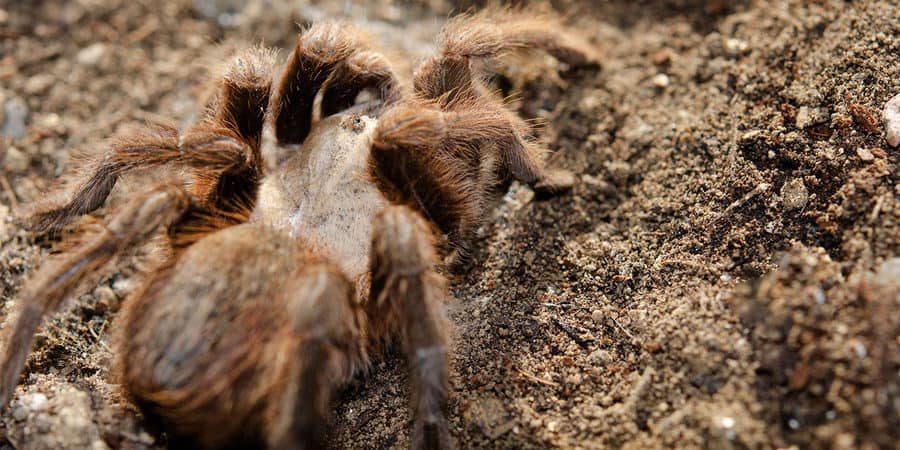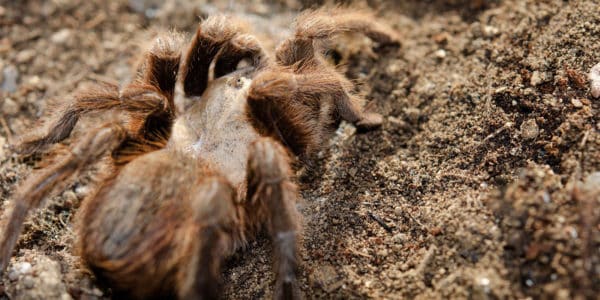

Emily Setton removes the lid from a small, plastic dish on her lab bench. Within the clear, rectangular plate are half-circle wells containing hundreds of round beads about the color and size of couscous — the large kind.
Setton, a graduate student in the lab of Integrative Biology Professor Prashant Sharma, is just back from a field trip to desert-like southeastern Colorado, where she stealthily collected these eggs from the grips of the female Texas brown tarantulas guarding them within their burrows in the sand. She needed the embryos for her research into spiders’ unique forms and abilities.
“I really wanted to understand how spiders make spinnerets, and how their legs may have been modified over time to make them. What’s the genetic architecture of the web-weaving appendages?” says Setton. “I am interested in how you make novel structures — how do they evolve and how does nature create novelty at the genetic level?”
Setton tried to use the eggs of common house spiders, but they’re just too small to apply the research methods she needed. Tarantula eggs, she found, were much better suited to the task. Keeping a few furry spiders around as pets isn’t so bad, either. They don’t eat much, though taking them for walks is discouraged.
The spinneret of a spider is an incredibly unique organ. No other animal possesses one like it. Setton is profoundly curious how this happens.
“Spinnerets are one of … those inventions of evolution that has allowed a group of animals to become incredibly successful,” she says. “They’re found all over the world, except in Antarctica, where it’s too cold.”
Sharma’s lab studies spiders and their ancestors to ask questions about how their unique forms came about. Does creating the spinneret of the spider involve co-opting genes that already existed for other purposes — say, genes involved in respiratory organs or leg development — or does nature evolve new genes for new functions?
“My advisor wants to know why daddy long legs (or harvestmen, which are not spiders) have long legs. I want to know: How do spiders weave webs?” Setton explains. “The answer is, we don’t know. We don’t know how silk is made or how the spinnerets and the spigots in spinnerets are made, at the genetic level. There is so much we don’t know; my inner child wants to know.”
So, Setton has embarked on a mining expedition of sorts, examining the appendages of developing spider embryos over time, looking for which genes get turned on and when—and where in their bodies.
She’s comparing to other species to see if she can tell just how old or new any particular gene is, and what these genes do in other related species.
“Some trends are emerging that indicate spinnerets express a significant number of ‘old’ genes and a significant number of ‘new’ genes,” she explains, based on her recent research, funded in part by the Emlen, John and Virginia Award Fund for Outstanding Graduate Work in Zoology.
The work is hard, and there’s virtually no playbook. Few have trod where Setton finds herself today.
“I never thought I would work in a lab where tarantula hunting was a thing we did,” she says. “I like the troubleshooting. I like the challenge of it, studying a non-model system. It’s frustrating sometimes, but it’s also very fun because a lot of it is new.”
from ScienceBlog.com https://ift.tt/3qwLORh


No comments:
Post a Comment